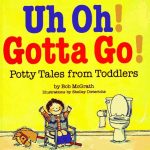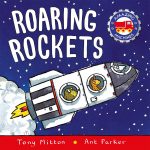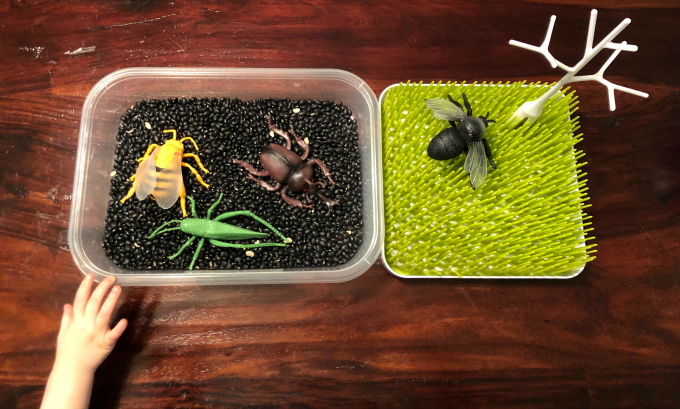
By April Wallace, nwaMotherlode contributing writer
If you haven’t already heard, or seen a million pictures on Pinterest, sensory bins are all the rage for toddlers. They come in many shapes, colors and sizes to exercise our children’s budding fine motor skills. Pincer grasp, coordination of hands and use of the wrists all take practice to master and sensory bins are a fun way to encourage it.
My problem with sensory bins? Some were just a little too complex to put together while minding my newborn at the same time. And some of them were far too expensive for me to stomach. (I’m looking at you, the person who suggested buying a particular table just for this…)
What really spoke to me were the occasional ideas I’ve run across that were incredibly simple and as cheap as can be. Being cheap and simple didn’t make these ideas any less fun for my toddler Henry, who is soon to turn 2. On the contrary, he’s had a blast.
So here are five sensory bins we’ve made recently. They’re not the best five of all time that you could make or superior to others in any way. But if you’re looking to be a sensory bin maker, these are a few easy and cost effective ways to get started.
-
It’s a bunny’s world ~ Cost: $1.88
Once Easter passed, I had all these plastic eggs lying around and quite frankly I didn’t have the energy to pack them up neatly just yet. It occurred to me that Henry would enjoy using the big ones as scoops, so I borrowed an idea from the totschool hashtag on Instagram.
I threw an 88 cent bag of Great Value brand frozen peas in my cart on a routine run to the grocery store, and once we were home, I put them in a rectangular Tupperware bin with a few large carrot-shaped Easter eggs that I got for a buck from the Dollar Tree.
Henry got good practice taking the lids off, and used the bottom halves to scoop and dump the peas. Then he had some pincer grasp practice with picking up the peas that didn’t land in the bin.
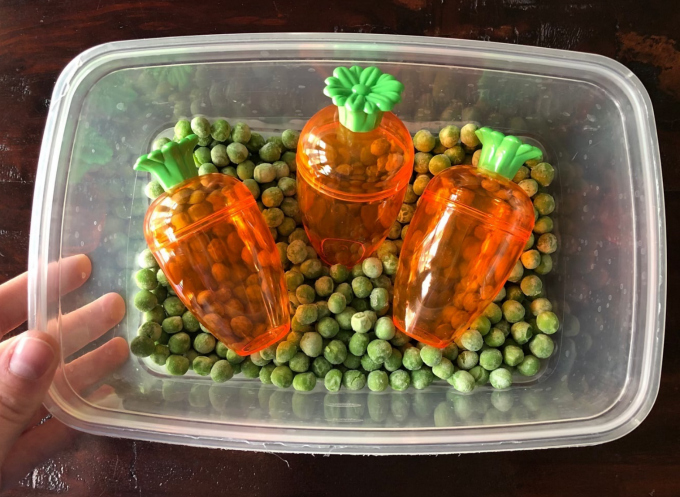
Once I saw how he liked to play with it, I added an old set of 3 plastic bowls (you know, the kind you used in college but stopped once you bought a nicer set) to the mix. He could pour the peas in any of those, then practice dumping the bowls from one to the next. Another time I gave him a measuring spoon and a cylinder bottle, which he immediately took to carefully spooning peas into.
He had so much fun with this one that I refroze the peas (being careful to label them so we wouldn’t accidentally eat the now-well-handled vegetable for dinner) and we’ve done the activity a few more times, making it even cheaper per use in the long run.
Bonus activities to pair:
Read “That’s Not My Bunny” by Fiona Watt
Read “Yum Yum Baby” by Rosalee Wren
Sing “Little Bunny Foo Foo”
-
Let’s move it ~ Cost $5.30
One rainy spring day, Henry was staring longingly out our dining room window at the mud puddles forming in our yard. I was still feeding my newborn every 90 minutes to 2 hours. We had no toddler sized rain boots yet, not to mention a lack of energy to chase and clean him afterward, so I thought it would be easier for us to play with mud inside.
I turned to the totschool hashtag once again and came away with a play mud recipe. Use 1 cup of cornstarch ($0.92 for Great Value brand), half a cup of water and 2 tablespoons of cocoa powder ($1.84 for Great Value). Mix it up in a Tupperware or bin that you don’t mind your little one playing in. It’ll be stiff at first, so add water until you get a consistency that allows some give, but isn’t watery.
Then I covered our coffee table in a cheap poster board (I paid $2.54 for a set of 8 posters at Walmart) and drew roads with a permanent marker for him to drive his miniature construction vehicles around on. We already had these toys, but monster trucks and various other vehicles are available at your nearest dollar store. I placed the play mud at one end of it so Henry could use the vehicles to push, dig and load the mud before driving it around and dumping it in various configurations around the “construction site.” To make it a little more life-like, we added a few little gravel rocks from our backyard that Henry had conveniently already carried in a day or two earlier.
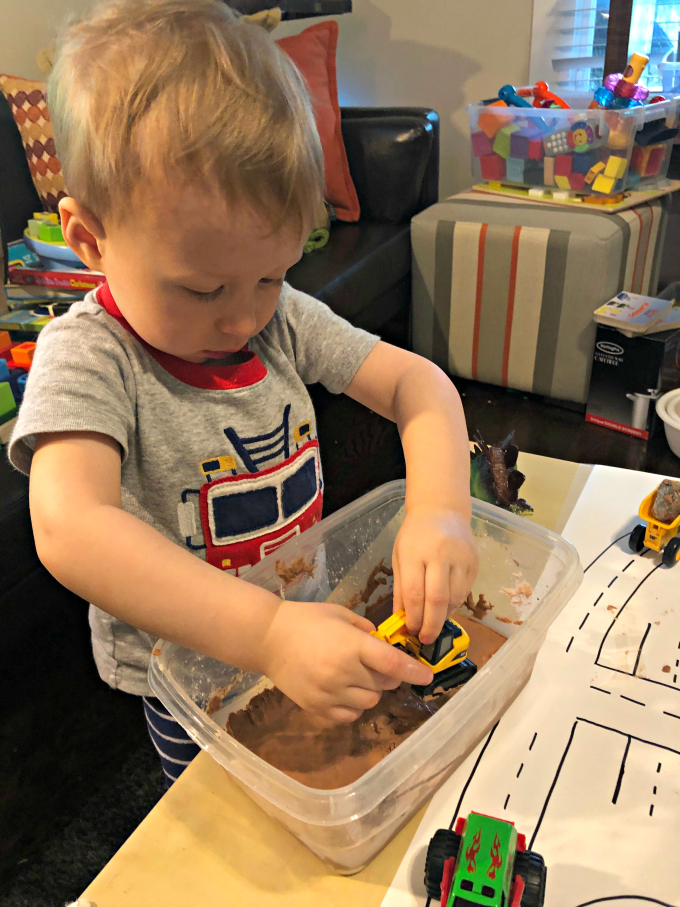
This one entertained him off and on for an entire day, then he proceeded to request it for days after. I found that the mud is easy enough to vacuum from rugs and wash off of toy vehicles once it’s dry and your toddler is sleeping or playing in another room—far enough away to be unable to protest.
Bonus activities to pair:
Read “Digger and Tom” by Sebastian Braun
Read “Construction Site: Lift and Look” by Felicity Brooks
Watch “20 Trucks: Digger” brief video/song on Youtube
-
A snack in the desert ~ Cost: $5
I threw this sensory bin together on a Friday afternoon when I needed some uninterrupted cleaning time. My only supplies were a bag of oyster crackers and a handful of safari animals from the Dollar Tree. At this stage, Henry still tends to put most everything in his mouth at some point, so having edible pieces whenever possible helps. I placed the oyster crackers in a short plastic container to symbolize a dry, sandy desert floor, put the animals standing among them and let Henry’s imagination guide him. He had the tiger and lion roaring at each other, the zebra galloping through them and the elephant trumpeting off to the side. After a while they were lined up all ready for a race and waiting on Henry while he ate some of the desert floor.
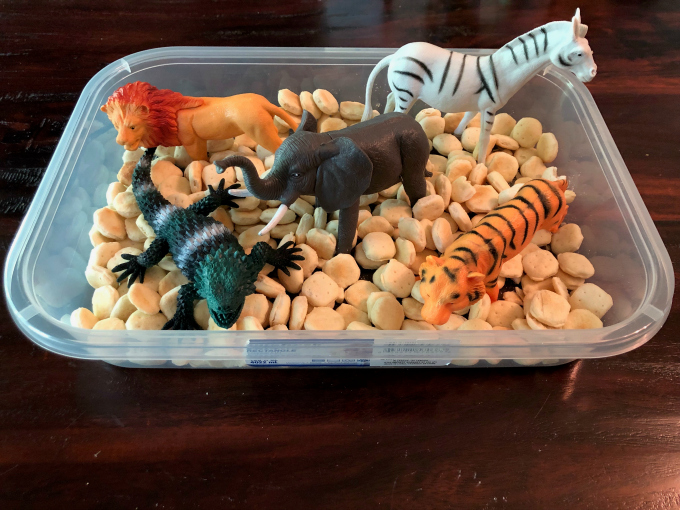
Bonus activities to pair:
Listen to “I just can’t wait to be King” from the Lion King
Use the figurines one by one and ask if your little one if he or she can make the right animal noises
-
A bug’s life ~ Cost: $5.44
My outdoor-loving toddler is beginning to be aware of insects and loves pointing out ants crawling on the ground, ladybugs that found their way inside, and butterflies that flit around him in the backyard. So I thought this idea from another totschool Instagram would be ideal. Use a simple one pound bag of dry black beans ($1.44 for Great Value brand) for the base to look like dirt or dark ground. If you have the Boon Lawn drying rack for bottles and sippy cups (like I do and many of my friends), you can use that as an extra surface. I bought a few giant bug toys from the Dollar Tree for a dollar each, including a fly, a bumblebee, a beetle and a grasshopper. I like that they’re jumbo sized, which makes it easier for me to remember that they’re not real when I encounter them throughout the house after Henry’s played with them.
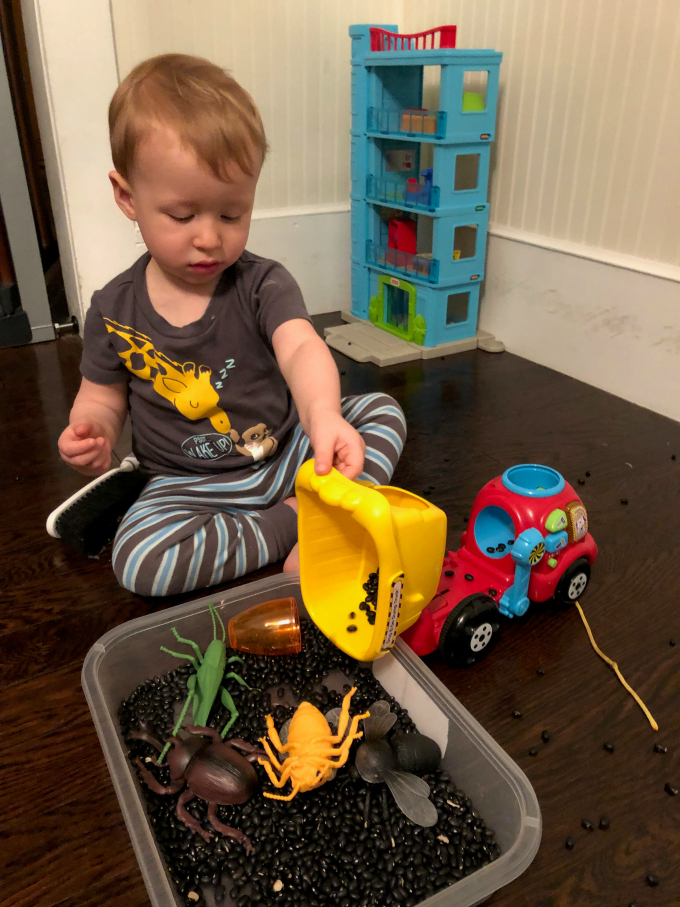
Henry used this sensory bin to have the bugs creep, crawl and fly, but he had much more fun moving the black beans around. He poured them into the fake grass and brought his dump truck into the mix, pouring black beans in the bed and dumping them back into the bin. Once I brought a hand broom and dustpan into the mix to mitigate the beans spilling everywhere, he enjoyed using that to manipulate the toys and beans, too.
Bonus activities to pair:
Read “Bugs Galore” by Peter Stein
Sing or listen to “The Ants Go Marching,” the “Itsy Bitsy Spider” and/or “An Old Woman Who Swallowed a Fly.”
-
A trip to the beach ~ Cost: $6
My family is going to the beach for our summer vacation, and while you can always talk with your toddler about it beforehand, there’s really no understanding what the ocean is really like until you get there. When I ran into these little buckets of play sand and plastic animals at Target for $3 each, I jumped at the chance to give Henry a better visual of our destination ahead of time, and a little preparation for the type of fun he could have.
I bought two play sand buckets, one with toy animals and one with toy bugs. I dumped them together in my shallow Tupperware bin, and then once again following a totschool idea, I filled a tall plastic box with a couple inches of water and a squirt of dish soap and toy fishes. I set the plastic buckets next to the pretend beach and ocean, along with a toy canoe Henry sometimes uses at bathtime.
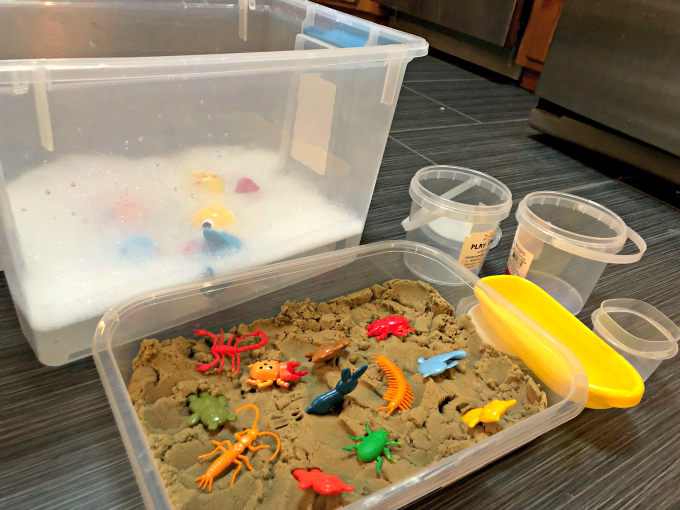
This combination was so captivating to Henry that we had to move the entire set out to our backyard while we grilled our dinner a couple hours later. The next day I set it on our front porch while I got some work done in front of our house. Clearly, he’s going to use this one until we actually arrive at the real beach.
Bonus activities to pair:
Read “Chu’s Day at the Beach” by Neil Gaiman
Sing “Under the Sea” from The Little Mermaid
 April Wallace is a stepmom to one smart, funny teenager, mama to two beautiful and curious baby boys and wife to a very kind and generous man. She spent the past decade as a news reporter, sometimes lifestyle writer, and recently left her job at the Arkansas Democrat-Gazette to be with her babies while they’re still babies. When she gets a few minutes to herself, April loves to run local trails and read fiction.
April Wallace is a stepmom to one smart, funny teenager, mama to two beautiful and curious baby boys and wife to a very kind and generous man. She spent the past decade as a news reporter, sometimes lifestyle writer, and recently left her job at the Arkansas Democrat-Gazette to be with her babies while they’re still babies. When she gets a few minutes to herself, April loves to run local trails and read fiction.

